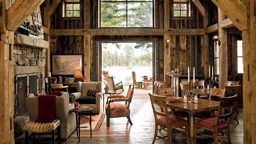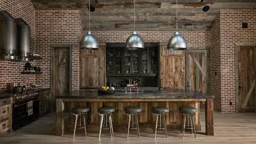
Adobe Stock / Darryl
People who love timber homes typically also love nature. However, when it comes to maintaining a home, due to the elements — sunlight, rain, wind, even basic warm and cool air — that pastoral scene can turn into a battleground. You can stand up to Mother Nature’s forces by building in features that will stand in defense of your home. To minimize your maintenance routine while keeping your home looking as gorgeous as the day you moved in, pay close attention to:
People who love timber homes typically also love nature. However, when it comes to maintaining a home, due to the elements — sunlight, rain, wind, even basic warm and cool air — that pastoral scene can turn into a battleground. You can stand up to Mother Nature’s forces by building in features that will stand in defense of your home. To minimize your maintenance routine while keeping your home looking as gorgeous as the day you moved in, pay close attention to:
Landscaping
Often, timber homes are built in rural, wooded areas. Although the idea of a house nestled in the trees is romantic, it may not be the smartest siting to protect your home and reduce time spent on maintaining it.Trees close to a house can cause a number of potential hazards, including twig, leaf and branch debris, sap accumulation and downed limbs (or whole trees) caused by storms — not to mention the threat of fire if your home is in a wildfire-prone area.
To mitigate these risks and boost your home’s longevity, create a tree-free perimeter around your home that’s at least 20 feet in diameter.
Keep other organic landscaping material, like shrubs, bushes and even mulch, a minimum of 3 feet from the home. This will deter mold and insects as well as improve airflow and reduce condensation, keeping wood, concrete and other materials drier. Inorganic material, like pea gravel or cobblestone, is safe and will help promote drainage. A roughly 1-foot-wide stone-based barrier will help create a mini-fortress around your timber castle.
Gutters
Of course you need gutters, but will they effectively move water from the roof and shed it away from the house? Make sure the downspout extends at least 4 feet from the structure (maybe more, depending on soil conditions) and is on a downward slope from the foundation.Overhangs
Deep overhangs are a design/build feature builders have been preaching for decades. The deeper the overhang, the better protected from sun, wind, rain and snow your home’s wood elements will be —and the more covered porch/patio space you’ll get to enjoy!See also: How to Develop a Lanscape Plan











